Catherine Opie
The views and tattoos of the all-American artist
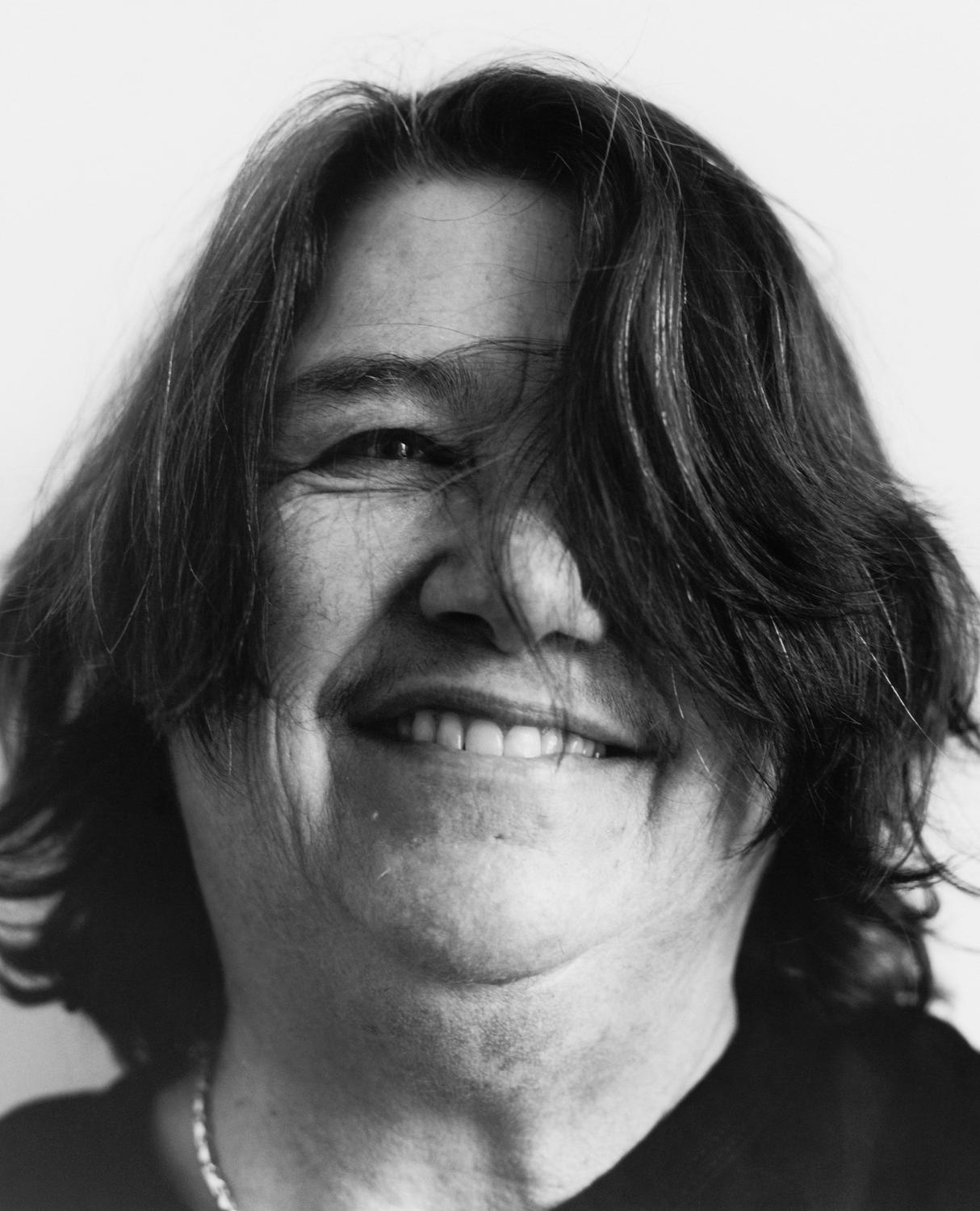
Catherine Opie is an artist who takes exquisite pictures of car-free highways, family groups, never-ending landscapes – classic images in the American tradition. Her affectionate series reflect her special skill of finding humanity wherever she goes. But her most famous photographs are probably the two self-portraits she made 30 years ago. One shows her back, the other her chest; in both, etchings are carved into her skin. Now Cathy, 61, is packing up her life, retiring from teaching, ready to move on. Her scope is still vast – as her latest tattoo makes clear.
Catherine Opie has a new tattoo. On her right forearm, above a swirl of blue and turquoise inspired by a painting her son, Oliver, made when he was two, she has had the word “vast” inscribed in big capital letters in dark ink.
“Turning 61, I want to think of my life as vast again,” she explains when I visit her in July in her 5,000-square-foot studio near Lincoln Heights in Los Angeles. “The landscape is vast; everything we have to offer can be vast. I want to encompass how I feel now.” A bush of pink and white mandevilla flowers cascades down the path leading to her front door. She greets me with a huge smile as she ushers me inside.
Catherine, known as Cathy, has been living in this complex of artist studios in a converted brewery since she and her wife, the painter Julie Burleigh, separated last November. The couple shared their lives for two decades and raised Oliver together (he is now 20 and reading art history at Tulane University in New Orleans) while Cathy taught photography at the University of California, Los Angeles. Since last summer, she has chaired the department. Now, she is about to embark on her final year before she retires.
She will miss her students, she says, and “seeing how they think, and being able to facilitate their ideas – the moment when they see the first exhibition of their own work is profound.” But she’s excited about what’s to come. “I’ve locked myself down in this intense professor-mom-wife role for so long, and now I want to be open to the world in a different way again,” she says.
Cathy is just back from South Korea, where she and Oliver went for the opening of her exhibition To Your Shore from My Shore and Back Again at the Lehmann Maupin gallery in Seoul. On display were near-abstract seascapes shot in 2009, when Cathy travelled on a container ship from South Korea to Long Beach in California, capturing the sunrise and sunset each day of the 10-day voyage, and studio portraits of her lesbian, gay and transgender friends taken in San Francisco in the 1990s, each of them immortalised against a rich monochromatic backdrop intended to bestow the grandeur of Old Master portraits.
At a gallery talk there, “a woman stood up and said that gay people can only hang out in one alley in Seoul. I looked at her and said, ‘How about taking your one-alley party and expanding to other alleys?’ During the Aids epidemic in the early 1990s, when I’d get beer cans thrown at me from cars and ‘dyke’ yelled at me, we would go to the most conservative restaurants in Los Angeles and take over the entire place and then all of us would start kissing.”
Before Seoul, Cathy was in London for another opening, at the Thomas Dane Gallery. She stumbled upon the Platinum Jubilee concert at Buckingham Palace and got chatting to a man from Liverpool. They talked about nationalism, patriotism and flag-waving in the United States and Britain. “I was with him for hours; he was a really nice guy,” she says.
This has been Cathy’s life of the past 25 years: constantly on the move, deeply engaged with the world, curious to hear different people’s perspectives. “My work really does need me to be out in the world listening, talking, looking, thinking.”
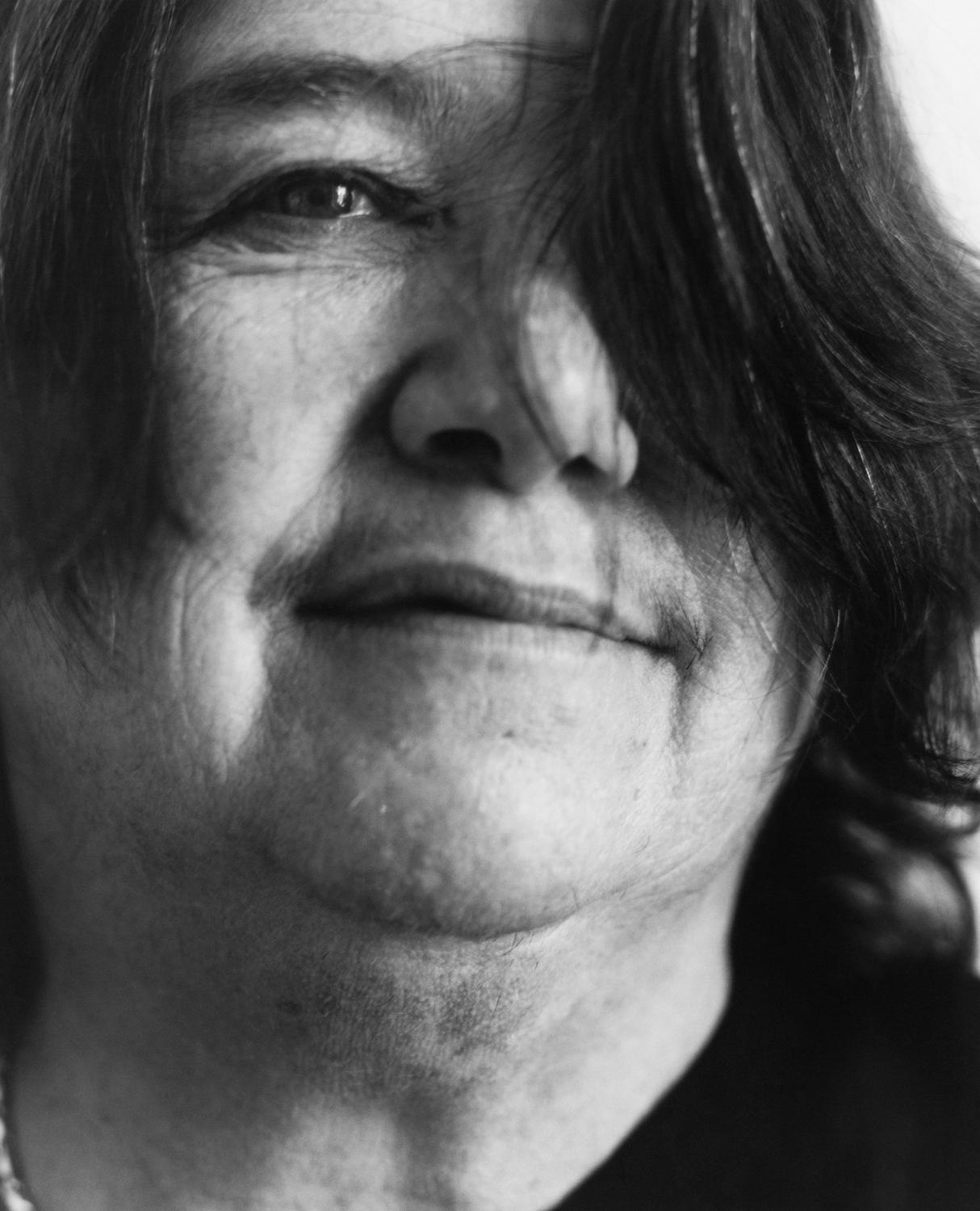
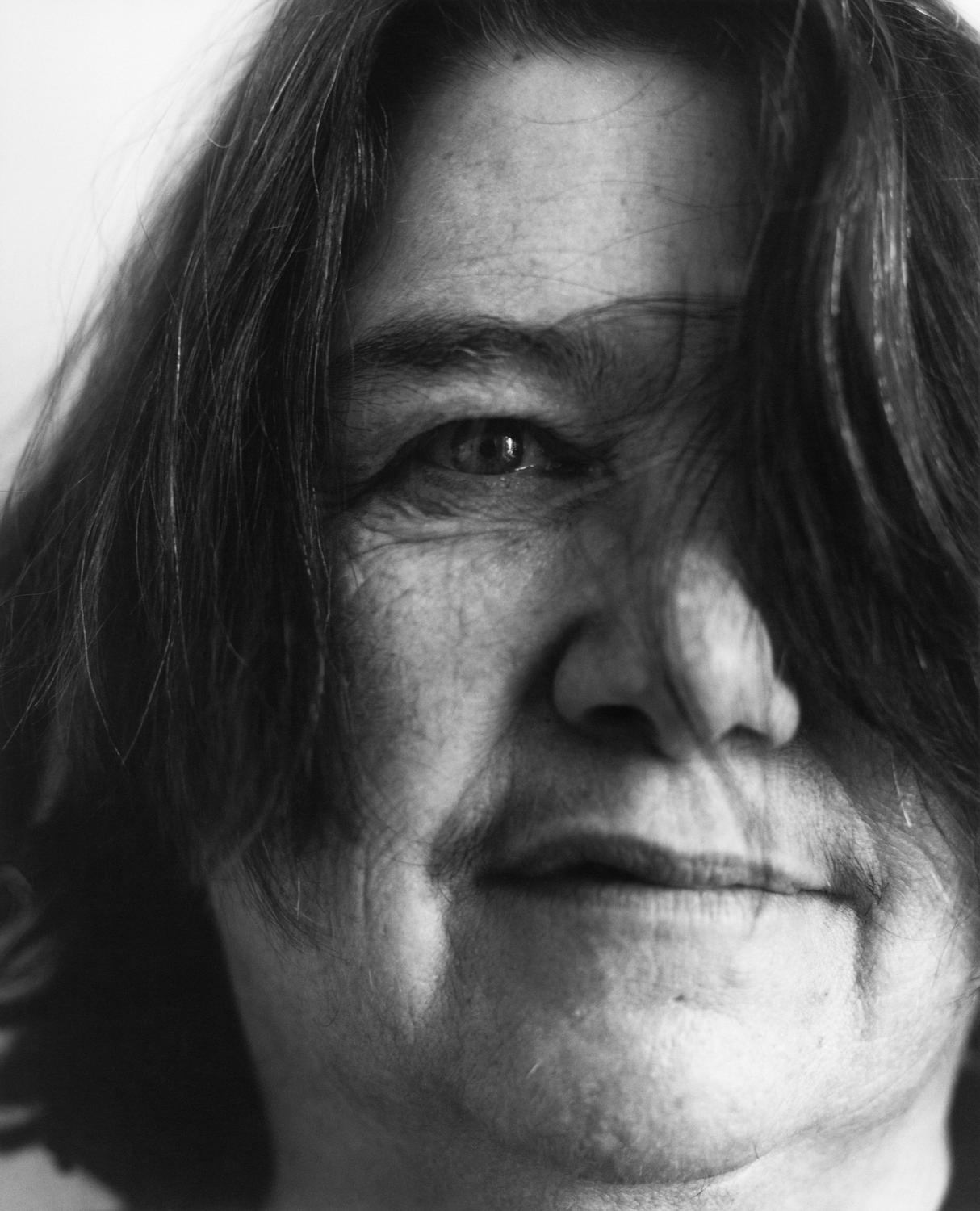
Catherine Opie shot to prominence in the United States in 1995 when two of her self-portraits were included in the Whitney Biennial, a prestigious state-of-the-nation exhibition held in New York.“Self-Portrait/Cutting”, from 1993, shows an entire scene which has been cut into Cathy’s back with a scalpel by her friend the artist Judie Bamber. Two female stick figures hold hands as smoke curls out of the chimney of the house behind them and a fluffy cloud and two birds float in the sky. “Judie had never cut anybody before, and I wanted that apprehension in that portrait,” Cathy says. In the final image, the lines are faint; the eye is drawn to the darker marks where blood has accumulated on Cathy’s back and to the patches of skin that have turned bright pink from the lacerations.
The portrait is about longing for a domesticity which Cathy, then a 32-year-old member of the lesbian leather community into SM play in dungeons, was constantly being told was beyond her grasp; the bloody lines on her body and sore skin show us the painful contours of her dreams of love and companionship.
The second photograph, “Self-Portrait/Pervert”, from 1994, is more confrontational. Cathy sits on a stool facing the viewer, her face concealed by a black leather mask. She wears black leather trousers; her chest is bare, and the word “pervert” – an insult often directed at Cathy and her friends – has been cut with deep incisions above her breasts in a delicate curlicued script. Her arms are arranged like Henry VIII’s in Holbein’s famous portrait, rounded in the pose of a warrior, her hands clasped in front of her. Twenty-three needles, arranged like armour, pierce the skin of each arm.
The photograph, now in the collection of the Guggenheim Museum in New York, is hard to look at, and was meant to be. “It’s about Aids and needles and needle exchange,” Cathy says. “My friends were dying. It was an important moment to talk about identity and being queer, especially within an American culture, in the wake of President Reagan, where we were ignored as a community in terms of getting medical care. Instead of retreating and being closeted, I decided that visibility and representation were important.” That’s why she made the portraits. A third self-portrait, made a decade later when Oliver was a year old, completes the trio. It shows Cathy breast-feeding her son in a classic Madonna-and-child pose (“Self-Portrait/Nursing”, 2004), staking a claim to a timeless scene of motherly devotion which has, for centuries, excluded lesbian women from the art-historical narrative.
These early self-portraits dominated Cathy’s story for years. “The vast majority of what’s written about her is written about the work that she produced around identity politics in the 1990s,” the photography curator and writer Charlotte Cotton says.
It is an incredibly reductive view of an artistic and photographic practice that has spanned decades, navigated an astonishing range of subjects and encompassed multiple techniques and approaches, from conceptual to photojournalistic, through portraits shot in the studio and on location, landscapes, cityscapes, reportage of protests, even abstract compositions such as her seascapes. “I love making studio portraits, but if my practice was only about that, I would not be very fulfilled,” Cathy says.
Several times throughout her working life, she has packed up an RV and embarked on a road trip, most recently in 2020, when she bought herself a new van and drove with Julie from Los Angeles to Richmond, Virginia, where Black Lives Matter demonstrators were staging protests in front of a statue of the Confederate general Robert E Lee. The resulting series of work, monument /monumental – now in the collection of the Broad museum in Los Angeles – includes multiple images of sunsets. “There is this suspended sun that never quite sets on the history of racism in this country. It is very much what I was thinking about as I was travelling,” Cathy says in a post on the museum’s website.
Her biggest and most enduring theme has always been America itself. Her series of works focusing on different groups, from her own LGBTQ+ community to surfers, ice-fishers in Minnesota and high-school American football players, explore the country’s subcultures and their place in the landscape. She has consistently probed the notion of the American dream, mapping its boundaries and asking always: Who is it for, and who does it exclude? Her photographs of American cities – their buildings, malls, bridges – and her 1990s images of freeways captured with no cars on them, giving them an iconic, timeless quality, raise questions about who this infrastructure was built for and who it has displaced, while her sublime landscapes ask us to consider whose idea of nature they represent. In her 2018 film, The Modernist, a classic tale of haves and have-nots, she tackles the failed utopian vision of modernist architecture. The story follows Pig Pen, a friend and collaborator of Cathy’s for many years, as they covet and then set fire to Los Angeles architectural gems, such as the Chemosphere, designed by John Lautner in 1960.
When the Guggenheim gave Cathy a comprehensive mid-career survey show spanning all four floors of its Frank Lloyd Wright building in 2008, the headline of The New York Times’ review was “A Retrospective of Many Artists, All of Them One Woman.”
“If I got to choose who would be the first photographer you came across in every textbook about observational photography, the road trip, American landscape photography and American portraiture, it would be Cathy Opie,” Charlotte Cotton says. “The history is still being written, but I think she’s going to be the most studied classic photographer of our time.”
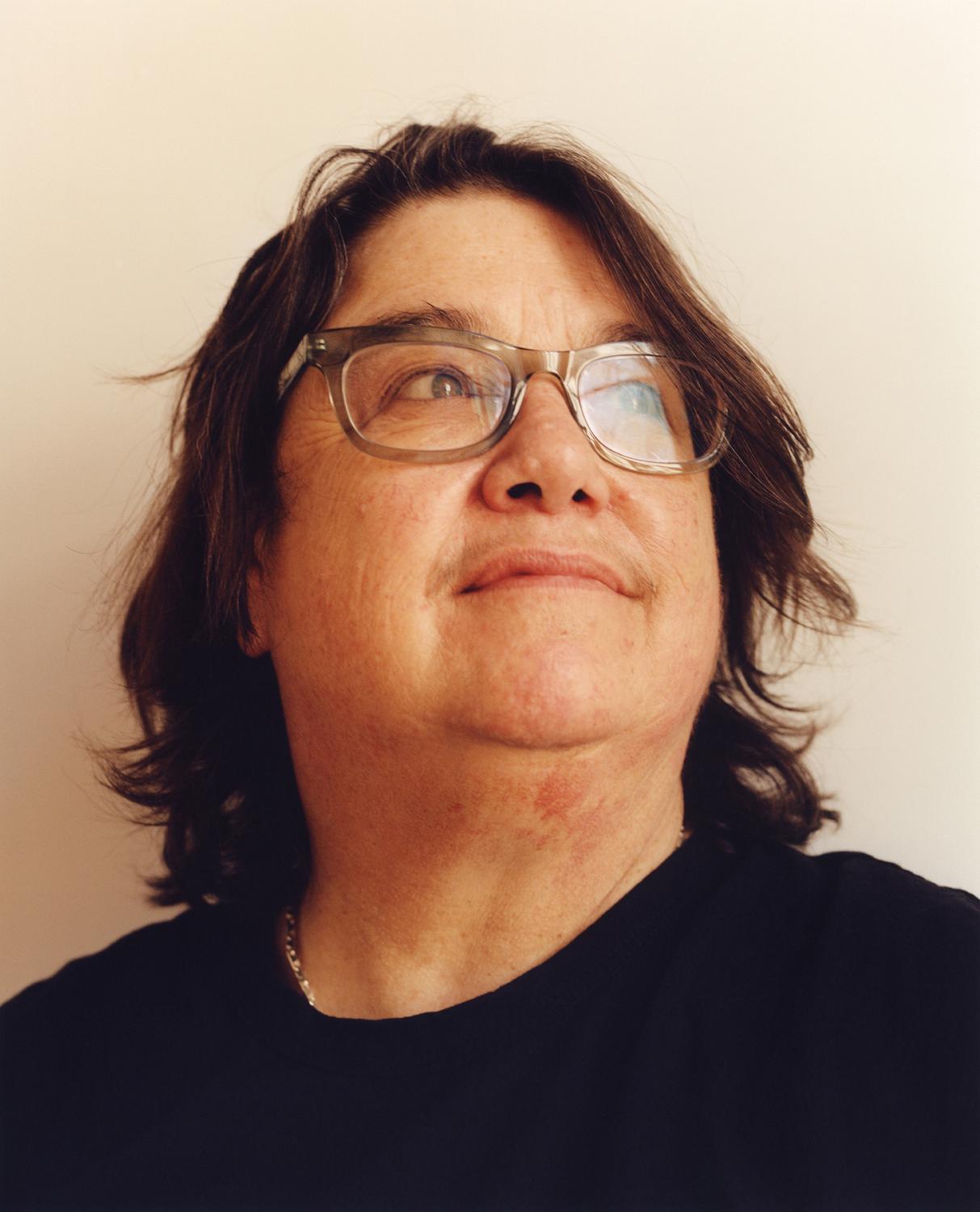
“I’m not saying it didn’t hurt; it hurt. But what you can do with pain is very interesting. How you can have it move through you.”
I am sitting next to Cathy at a large table in her studio. She is wearing jeans and a black T-shirt which reveals an impressive panoply of tattoos on both her arms, most of them freehand designs by her “bestie” of 30 years, Idexa Stern. Cathy wears grey-rimmed glasses and a chunky silver chain around her neck; her dark, shoulder-length hair frames her face. “If my face could support no hair again, I would totally go there,” she tells me when she shows me a photograph of herself in her 30s with a shaved head.
Cathy leans towards me as she speaks, answering everything I throw at her; nothing is off limits. It feels conspiratorial, and it’s easy to see why she is an effective teacher: rather than growing impatient, she encourages you when you lose your train of thought or say something stupid. “Cathy is a role model for students who benefit from the bravery and generosity that the work offers and generates,” says her long-time friend the artist Barbara Kruger, who teaches alongside Cathy at UCLA and served with her on the board of the Museum of Contemporary Art in Los Angeles.
Cathy and I are turning the pages of a massive Phaidon monograph devoted to her work. The book, published last year, has been a long time coming. “I remember this moment in the 1990s when I realised that my male contemporaries like Wolfgang Tillmans and Jack Pierson already had multiple books published about their work, whereas I had, like, two tiny catalogues.”
For her as a woman, navigating the “bro” world of photography, as Cathy describes it, has had other frustrations, too. “Every camera store I would walk into, I would ask for certain things and they’d be like, ‘You don’t want that.’ And I’d say, “Actually, I do want that,” and I would put down my credit card, and they’d be like, ‘Oh, you’re Catherine Opie.’ And I’d say, ‘Yeah, I do know what I’m doing, and maybe you’ll treat the next woman with a bit more kindness.’”
Though her monograph may be long overdue, Cathy is delighted with the results. “I’m interested in my archive in a different way now, because making that book made me realise that all my distinct series of photographs go together, and this has allowed me to reimagine my practice.”
Her archive of photographs, negatives, contact sheets and digital files, accumulated over nearly four decades, occupies the upstairs floor of her studio, next to her bedroom. Downstairs are an ample workspace and kitchen, plus a bedroom for Oliver and offices for herself and her full-time studio manager, Heather Rasmussen. Eventually, Cathy hopes to buy herself a new home; Julie is living in the house the couple bought together on the edge of Hancock Park when Oliver was 13. “One day, I hope to figure out how to get a place that looks out over the ocean with a pool; that’s my aspiration,” Cathy says. Though she is highly successful, her money is not unlimited. “People come up to me all the time and say ‘I love your work, but I can’t afford it.’ And I’m like, ‘I can’t afford my work either.’ Yes, I’ve done incredibly well, but it takes a lot of photographs to build a life.”
One corner of her studio is covered in black felt cloth; this is where Cathy shoots her portraits. Her Holbein-inspired, vibrantly coloured backdrops stand rolled up to one side. “Everything happens here,” Cathy says. “We print everything in-house, unless they’re darkroom prints. The show I just did in Korea had chromogenic prints, which I hadn’t done in a while. It’s the C-type paper I used in the 1990s that is just so special, and it’s going to become obsolete soon.”
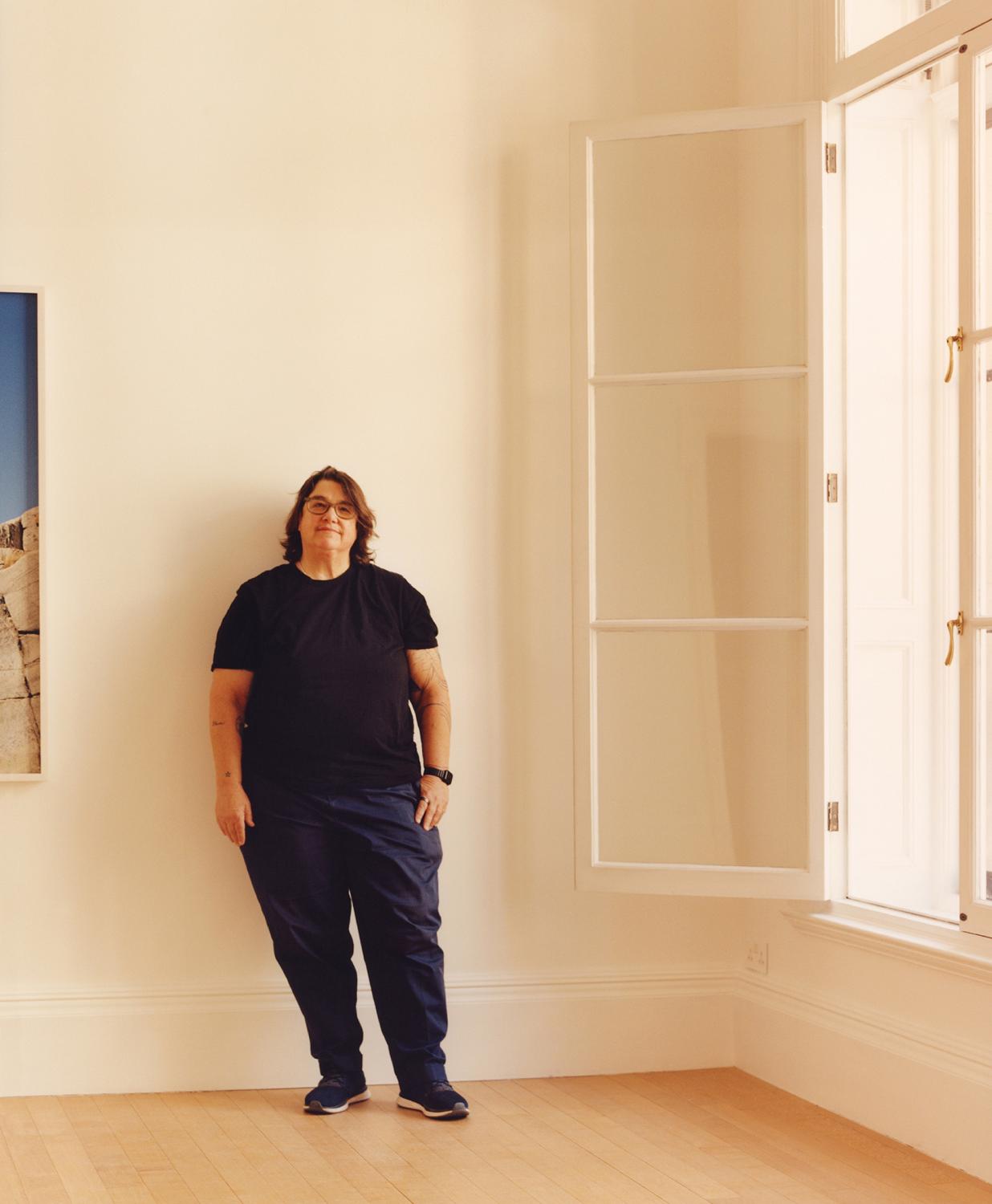
“In the 1990s I realised that my male contemporaries had multiple books published about their work, whereas I had, like, two tiny catalogues.”
Pinned up on two walls of the studio is Cathy’s latest series of photographs, taken last spring while she was doing a residency at the American Academy in Rome. Her subject: the Vatican. On one wall are five large black-and-white photographs of the imposing walls surrounding the Vatican City state; on the other, 12 photographs arranged in a grid show close-ups of bloody wounds in the bodies of men, women and animals – all details of tapestries and frescoes from the Vatican Museums. “It was during the pandemic. I’d be in the Sistine Chapel and there would be five other people there. I got to experience the Vatican like nobody experiences the Vatican.”
“A lot of my work is about revealing different ideas of systems: either community or identity. But what is identity? And how do we begin to unpack it? And how do we unpack it in relationship to physical structures?” On one studio wall, then, are the fortifications of the Vatican, its outward face to the world: powerful, impenetrable, inscrutable. On the other, an entirely different story emerges: a distillation of the Church’s message of violence which lies at the foundation of Western culture and art.
“Even though I was born in 1961 in the Midwest, I was raised mostly as an atheist, which was highly, highly un-usual,” she says. She did try “to find Christ” once when she was 13. “My mother had taken my brother and me to this drive-in screening of The Exorcist in Southern California. When we got home, I was like, ‘Do we have a Bible in the house? Maybe I should get baptised. Am I going to go to hell?” She laughs. But the moment did not last. “Coming out as queer gave me more intense scepticism of religion as people in the 1980s rallied with cries of ‘You’re going to hell.’”
Catherine Opie was born in Sandusky, a small city on the shores of Lake Erie in Ohio. Her father, Bill, worked for the family firm, O-P Craft Co, making basswood boxes; her mother, Lou Valentine, left her job as a gym teacher to bring up Cathy and her older brother. “I remember my mom trying so hard to have me be a girl. By age nine, I had completely rejected dresses, to her dismay, and I was running around with a whole pack of boys in the neighbourhood, playing baseball, being sporty.”
Cathy still enjoys being outdoors, swimming in the ocean or spending time in her house in Sequoia National Park. “I’m a fishing, smoke-a-joint person. I like to get a beer,” she says. “During the pandemic, I would go off all along different parts of the river to try and catch a trout. For a month. That was a daily practice. I never caught a fish, but it was really fun.”
A photograph in the recent book shows her aged nine, wearing glasses, a dark T-shirt and flowery trousers, her fists clenched, her arms raised in a bodybuilder pose. “I wanted to be a strong boy. These flowery pants were the one way that my mom could make me feminine. But the zipper is down. That is just hilarious to me,” she says. The image is one of Cathy’s earliest self-portraits. She took it with the Kodak camera her parents gave her after she completed a book report on Lewis Hine, whose photographs in the 1910s and ’20s helped introduce the first child labour laws in the States. “I told my parents I wanted to be a documentary photographer.” This was the era of protests against the Vietnam War, which were documented in general interest magazines like Life and Look. “I couldn’t articulate it then, but I saw what images could do,” Cathy says.
At 14, after her family had moved to a suburb of San Diego, Cathy set up a darkroom in a bathroom with money she had made babysitting. “My grandfather had a darkroom in his basement. I was around photographers,” she says. She used her camera to make friends, constantly snapping photographs of her peers. At 15, she became a summer camp counsellor; she would return to the job every year until she was 21. “I really love kids and wanted to teach kindergarten,” Cathy says. And so, aged 20, she went to Virginia Intermont College to study early childhood education. By the following year, she had relocated to San Francisco after her father’s girlfriend persuaded her to go to art school instead.
While doing a BFA at the San Francisco Art Institute, Cathy lived for three years at the Kenmore Residence Club, which was then a hostel. She staffed the front desk from 3am to 8am; she also photographed the building’s residents for an art school project. It was in San Francisco that Cathy discovered the lesbian leather community, which gathered in dungeons for transgressive sex. She met Idexa Stern in 1993, and they became friends and “play partners”. “We got really deep into things together,” Cathy says.
“There was a lot of homophobia around, but we felt like we had our own little island,” Stern tells me over the phone from her home in California. “SM was still underground then. It was a lot more raw than it is today; women played really hard but also laughed so much. It takes a lot of trust to do the stuff I did with Cathy. We had a lot of fun and wouldn’t take ourselves too seriously. I learned that from Cathy. She made me feel a little lighter, a little more loved.”
The private dungeon play, made public by Cathy in her Whitney Biennial self-portraits in 1995, was radical. It owed something to the tradition of performance art and its central idea of using the body as an artistic medium. This was part of the rise of conceptualism, which favoured ideas over tangible works and focused on art that could not be easily bought and sold. In 1964, Yoko Ono, then aged 31, sat impassively on a stage in Kyoto, Japan, while a succession of audience members used scissors to cut off her clothes, in “Cut Piece”, a performance intended as a feminist critique of traditional gender roles. (Cathy describes its incipient threat of violence as “mind-blowing.”) Seven years later, the American artist Chris Burden stood in an art gallery in Santa Ana, California, while a friend shot him in the arm, partly as a protest against the Vietnam War. (When I ask Cathy where she thinks the idea of using blood as a medium in performance comes from, she says, “Hello, have you heard of Jesus?”)
By the late 1980s, when Cathy moved to Los Angeles, radical performan-ces were taking place in gay clubs and SM dungeons and sometimes spilling into public spaces. In 1989, the artist Bob Flanagan, with whom Cathy was briefly involved – “the only time I crossed over into straight land is when I was dating [the photographer] Sheree Rose for a while and she was Bob Flanagan’s dominatrix” – publicly nailed his scrotum to a board. “I came out of this community of people that were doing these performances together.”
A guiding light for Cathy was Robert Mapplethorpe, whose photographs of gay men in leather bondage taken in New York in the 1960s and 1970s sparked a national culture war about federal funding and the limits of free speech when they were shown at publicly funded museums. The then senator Jesse Helms railed against the images; the Contemporary Arts Center in Cincinnati, which held a Mapplethorpe retrospective in 1990, was visited by the vice squad. Seven images were deemed obscene, and the museum director was charged. Five of those images came from Mapplethorpe’s X portfolio.
“When I was in San Francisco, I would go all the time to the Fraenkel Gallery to see X portfolio, because I was playing tic-tac-toe with Robert,” Cathy says. “I made black-and-white photographs of the SM community in San Francisco throughout the 1980s; that always felt too close to Mapplethorpe for me.” She published one, “of Anna Marie pissing”, in the lesbian magazine On Our Backs but did not exhibit them. When she moved to Valencia to do an MFA at the California Institute of the Arts in 1986, she spent two years studying newly built, and extremely white, residential communities in Southern California for her thesis portfolio, Master Plan (1986 – 88).
It wasn’t until after graduating in 1988 and moving to Los Angeles that Cathy felt “called to action,” as she puts it. Aids and rampant homophobia were the realities of gay life. “My friends were being beaten up, they were losing jobs,” Cathy remembers. While working at Pan Pacific Camera in Los Angeles, getting equipment ready for Herb Ritts, Greg Gorman and Annie Leibovitz, she began shooting a series of portraits of her LGBT community: Being and Having (1991). By the time she made “Self-Portrait / Pervert” three years later, Cathy was fully immersed in the Los Angeles dungeon and club scene. Although the lighting, framing and use of colour she used were consciously different to Mapplethorpe’s, by choosing similar subject matter, she was crashing a national conversation about representation, censorship and federal funding.
A few years later, when Cathy photographed lesbian couples in their homes for her series Domestic (1995 – 98), she intended it as a counterbalance to prevailing representations of home life. In 1991, the exhibition Pleasures and Terrors of Domestic Comfort at the Museum of Modern Art in New York had surveyed domestic life in America through the work of some 70 artists but “there was almost no representation of gay people,” Cathy says. “My body of work Domestic was in dialogue with the MoMA show; a lot of times my bodies of work are corrections to what I feel is not represented and I’ll use a certain specificity of photography to be part of that conversation.”
In 1999, Cathy spent two months at Washington University in St Louis, in Missouri, and there she met Julie Burleigh, a professor of painting. “When I got together with Julie, I was already trying to get pregnant,” Cathy says. “I didn’t want to use an unknown donor, because I have so many friends who came out of adoption, and they have spent their lives looking for their biological parents.” So when, in 2000, she was offered a job at Yale and moved to New York, she turned to a gay friend and colleague of many years, Rodney Hill, the director of Jay Gorney Modern Art in New York. “He’s a beautiful person, a kind human being. Tall and handsome.”
Rodney said yes, and Cathy got pregnant via intrauterine insemination. Then, she was offered a tenured position at UCLA and moved back to Los Angeles in 2001, buying a house in West Adams. “Julie was like, ‘Oh, OK. I guess I’m doing this with you.’” Julie moved to Los Angeles to be with Cathy, and a few years later, when Oliver was four, Rodney came too, buying a house across the street from them and eventually opening a Japanese art gallery, Nonaka Hill, in the city with his husband, Taka Nonaka.
“Oliver was raised by an incredible community of queers and thinkers that still inform his thoughts today,” Cathy says. Her series of photographs In and Around Home (2004 – 5) record his early years: Oliver in a pink tutu and silver tiara standing on a chair; Cathy, sitting on the floor in her pyjamas and fluffy slippers, family dog on her lap; Julie on the back patio with another dog, standing amid flowers and herbs in terracotta pots.
“When I was in Korea, Oliver spent a good amount of time on the phone to his dad,” Cathy says. “It really surprised me to realise what an incredible bond they have.” On the same trip, Oliver told his mother that “Self-Portrait / Cutting” is his favourite work of hers. “He said, ‘You got to live the dream you cut on your back in 1993, and I’m part of what happened with that dream, so it’s the most meaningful to me.” Cathy has kept an edition of the photograph for Oliver.
Cathy has pulled out her laptop and is playing me the hour-long video of the making of “Self-Portrait / Pervert”, shot in a San Francisco studio in 1994. A few friends of hers have seen it, and she once tried to show it to her UCLA students, but “it freaked them out.” As she presses play, Heather, leaves the room. “She can’t watch it,” Cathy says.
In the centre of the screen is Cathy, aged 33, seated on a stool, head shaved, chest exposed. She is laughing. Two women are preparing her arms for the insertion of 46 needles, carefully making marks so that they can place them in her flesh symmetrically. One of them is Idexa Stern. As the needles go in, Cathy starts breathing heavily. Once they are in place, her friend Raelyn Gallina, the body modifier and piercer, who died of breast cancer in 2014 – “an amazing, amazing spiritual leader in our community” – slowly (and I mean slowly) carves the word “pervert” into Cathy’s chest. It’s a bloodbath. But the most excruciating bit is the torture-like finale. After the cutting is finished, Gallina sprays alcohol on Cathy’s chest and pats her down with paper towels. “We needed my body to be really clean. I didn’t want blood dripping for this image. I’m not saying it didn’t hurt; it hurt. But what you can do with pain is very interesting. How you can have it move through you.”
What emerges from the video, beyond the copious amounts of blood, is the attentiveness of Cathy’s friends: as she struggles with the pain, they surround her, holding her hands, arms on her shoulders, guiding her through the deep breathing which helps subjugate the pain. “The beautiful thing about this is that you see the care that is taken for me to be able to make that piece,” Cathy says. “Most of my friends remain in the leather community, but I have not been a player for two decades. Now that Oliver is grown, though, I’m not saying that anything is off the table any more.” When I tell her the video belongs in a museum collection, she laughs. “Maybe I’m ready to show it to the world.”
Cathy has always had a complicated relationship with her best-known self-portrait. “I’m very happy and proud I made it,” she says, but she was not prepared for the public’s reaction. Before the Whitney opening, she had to come out to her parents for a second time. “They already knew I was a lesbian, but they didn’t know I was that kind of lesbian,” she says. And once the image was on display, the response “was much harder for me than I anticipated. People had this weird relationship with me afterwards. They would come up and say, ‘I was really scared to meet you.’ They had all these presumptions of who I was. There’s a reason I started photographing freeways afterwards: I didn’t want to be locked into this singular identity.”
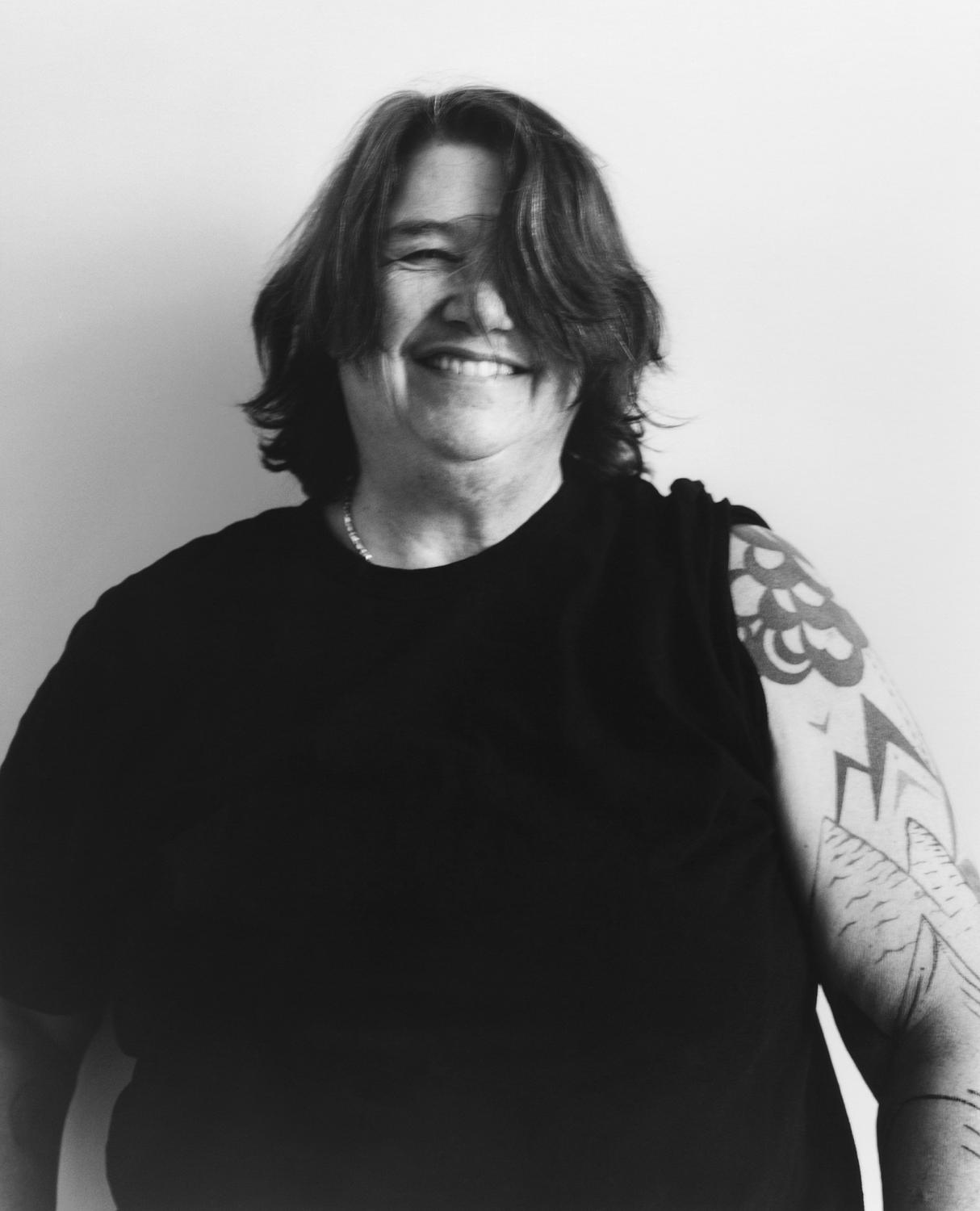
More than 10 years later, when Cathy was preparing to shoot her series High School Football (2007 – 09) in conservative states such as Texas, the self-portrait, which was then at the top of her Wikipedia page, was haunting her still. “I kept trying to take it down, because I needed the football players’ parents’ consent to photograph their children, and I didn’t want them to search my name and the first thing they see is ‘Pervert’. I had a Wiki war: I’d change the image, and then Wikipedia would change it back. Finally, they gave me a warning for how many edits I did.”
It was while she was photographing the student football players that Cathy confronted some of her own prejudices. “That was the beauty of that body of work. Ideologically, I assumed they were all conservative, and I had certain ideas about their identity: Oh, they’re all the jerks in high school who are going to beat you up. But the work made me realise that my feelings were flawed. Although these students are hyper-masculine, their bodies are floppy, and they don’t know how to deal with their masculinity. In fact, they’re incredibly vulnerable. They’re being trained to endure this gruelling physical sport, and afterwards, if they don’t have a college scholarship or aren’t from a family with money, a good portion of them will go into the military.”
I ask her if she would consider photographing far-right rallies by the likes of the Oath Keepers or the Proud Boys, the way she documented a Tea Party rally in 2010. “I feel that there wouldn’t be the same kind of authenticity, because I would be doing it from a skewed lens.” Documentary photography is not completely objective; that’s impossible, she says, but at the same time, you need to approach your subject with humanity and kindness, “and if I can’t reach down and find that within me, then it’s territory that I leave alone.”
So how does she feel about the country she has been photographing her entire life? “We’re in trouble. My biggest concern is: Are we going to get to a point where we actually have a civil war again within these borders? We have a rogue Supreme Court that is shrinking the ideology of this country back to the original framers. I was born in 1961; Kennedy was assassinated two years later. As a child, I lived through the civil rights movement and Vietnam, and I have been politically aware my whole life, but I don’t remember a more fraught time than now. For the first time ever, I am asking myself: Do I need to leave my country?”
Later, though, she tells me she is already thinking about what she can do to fight back. One of her former students, Carmen Winant, teaches at Ohio State University. “That’s my home state, where a 10-year-old just had to cross over into Indiana for an abortion because she was raped. It’s absurd. It really is The Handmaid’s Tale. So I said to Carmen, ‘I’ll come lecture. Bring me to Ohio.’”
Cristina RuizA distinct and intelligent voice in arts writing who has interviewed Barbara Kruger, Rachel Whiteread, Catherine Opie and Shirin Neshat for The Gentlewoman, Cristina is the former editor of The Art Newspaper who has also contributed to Vanity Fair, the Financial Times, UK Vogue and The Sunday Times Magazine.…read more Portraits by
Jamie HawkesworthFrom Suffolk on the east coast of England, Jamie Hawkesworth is one of the most prolific photographers working today. Initially destined for the forensics lab, his introduction to photography came through a class on crime scene documentation while studying at the University of Central Lancashire. The…read more